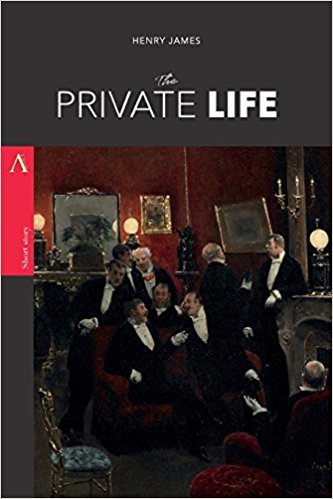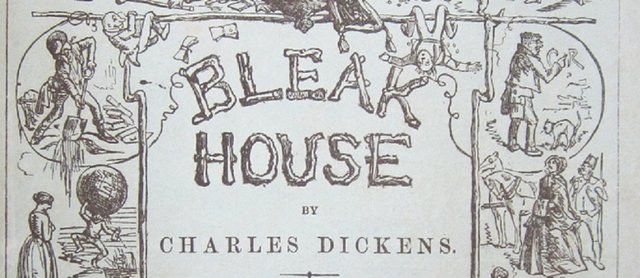I have often fantasized about there being another "me" to take care of all of the time-consuming, mundane tasks that take me away from my creative work.
All creative workers can identify with this, I am certain, and desire the services of a shadowy aide to take care of housekeeping, shopping and mundane administration tasks while No. 1 is freed to get on with creative activity.
The Private Life is a short story by Henry James in which a writer on vacation in an exclusive Swiss resort "falls in" with a party of his London friends. Present are Lord and Lady Mellifont, actress Mrs Adney with her composer husband, and novelist Clarence Vawdrey.
The story is told in first person, and we never find out the writer's name, only see the events unfold through his eyes. Apparently, Vincent Adney had been a "little fiddler" in an orchestra before he met and became enamoured of his wife.
After this, he rose to prominence and, according to the writer, he set his beloved to music. Vincent's one regret was that he was unable to write a play for his wife and took to asking other writers if they would do so.
On meeting Clarence Vawdrey, Mrs Adney asks him the inevitable question. Although the novelist wasn't in the habit of writing "modern comedies", he agrees - and greatly pleases Blanche Adney.
At dinner a few days later, Vawdrey insists that he is into the third act of the play. The others are puzzled because they have seen the novelist lunching, playing billiards and generally lounging about all day. The writer, who is wishing that Mrs Adney had asked him to write the play, offers to fetch the manuscript from Vawdrey's room.

Vawdrey's reply is mysterious: if there is anything, you'll find it on my table. It is late in the evening before the writer gains the opportunity to carry out his mission. He catches a glimpse of Vawdrey on a terrace with Mrs Adney, then proceeds to the novelist's room.
Apart from starlight coming in the window, the room is dark. The writer is just about to strike a match when he sees a figure seated at the table, near one of the windows.Is that you, Vawdrey? he asks. The seated person does not answer the question. A beam of light from a passing candle in the corridor outside reveals that the person definitely is Vawdrey.
The writer is puzzled because he knows he has just seen Vawdrey with Mrs Adney. Also, why does Vawdrey not answer him, and how can he write in the dark? The doppelganger syndrome, also known as autoscopy, is the term given to the meeting of one's own double, which makes The Private Life a variation on the theme.
According to my source, "real" doppelganger experiences happen late at night or early in the morning. The image that the subject sees is usually transparent and monochromatic, though clear and lucid. Also, the subject usually only sees the head, trunk and face of the double figure. There is nothing new about the doppelganger; one early account was written by Aristotle. Nowadays, experts associate autoscopy with brain disorders like epilepsy and migraine.
In the not very distant past, they were - unsurprisingly - associated with the supernatural, the doppelganger believed to be the ghost or spirit of the subject.
However, a person who dies soon after seeing his or her own doppelganger may have been the victim of a fatal brain disorder, in any case. It is not surprising either that the doppelganger has crept into literature and folklore.
In his novel, Bleak House, Charles Dickens plays much with the theme. Heroine Esther Summerson is taught in school by identical twins "the two Miss Donnys". By the end of the book, there are two Bleak Houses. It makes me wonder if Dickens - and Henry James - had actual doppelganger experiences.
I also wonder if the writer in the story is actually James himself, since he hints at his (the writer's) fame when a resident in the hotel asks him to sign her "birthday book". In the remainder of the story, the writer gently investigates the doppelganger incident.
He tells Blanche Adney that the "apparition" he has seen looked infinitely more like him than our friend does himself. Here, the writer is alluding to the very social Vawdrey that presents himself to the world and never talks about his work. One goes out, the other stays at home.
One's the genius, the other's the bourgeois, and it's only the bourgeois whom we personally know...
There are many more threads to this fascinating little story, written in James's dense style, and published in Ghost Stories of Henry James.
Nowadays, with electronic avatars living our lives in cyberspace, the theme of the doppelganger is not going to go away.
SOURCES
Ghost Stories of Henry James
The Oxford Companion to the Mind


This post was shared in the Curation Collective Discord community for curators, and upvoted and resteemed by the @c-squared community account after manual review.
Downvoting a post can decrease pending rewards and make it less visible. Common reasons:
Submit